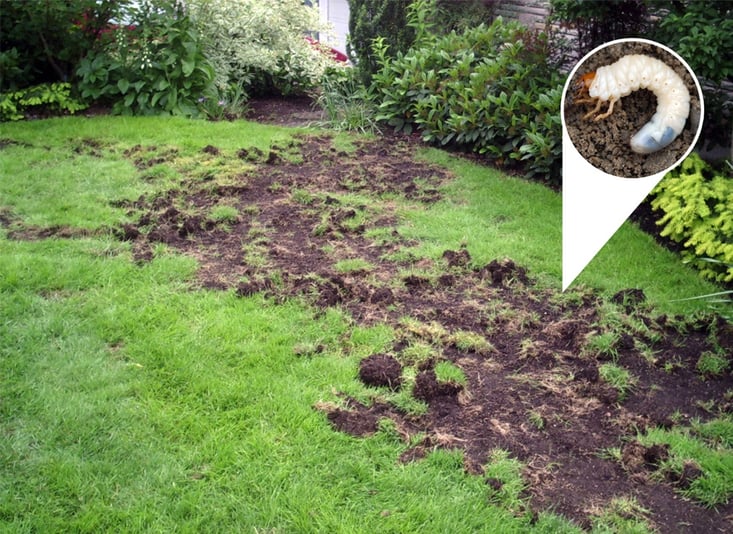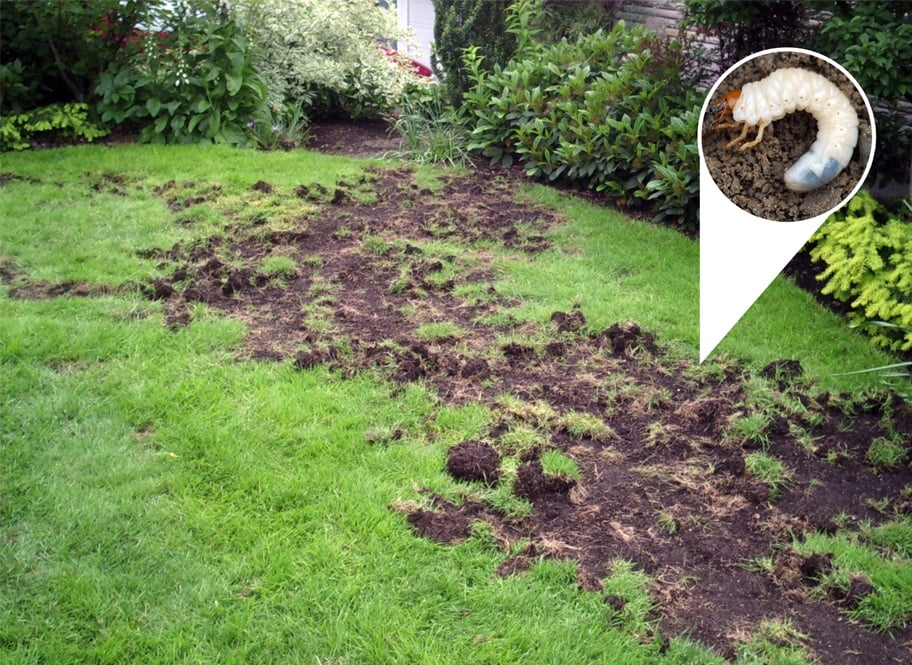
Did you know that there are different species of grubs? The term "grub" is often used as an umbrella term for lawn care foes that feast on your gardens and grass. However, each grub requires a particular kind of treatment. Though nematodes are recommended by Nutri-Lawn Ottawa as the most effective and natural grub solution, this is only true so long as you are using the right nematodes for the your kind of grub.
Ottawa lawn care can get specifically nuanced and confusing. Nutri-Lawn Ottawa lawn maintenance services are here to take the bewilderedness out of the wilderness, and setup your lawn for success. Read on to learn all about the species of grubs and their nematode counterparts.
Japanese Beetle
Around mid-June, adult Japanese beetles will begin to mate. Once the eggs are nested into your lawn, they'll take about 14 days to mature and hatch. The size of the batch of eggs is different each time, but it's good to remember that every month of mating by Japanese beetles brings as many as 20-30 eggs per female. That's a lot of little grubs eating your lawn!
And do they ever feast! Just like any other baby, grubs are hungry growing creatures. They can do some significant damage to your lawn as they munch away at the grass to get the energy and nutrients they need to mature.
Adult beetles are a lustrous emerald and copper, about half an inch long, and oval bodied.
European Chafer
Mating for these beetles begins around the same time as mating for Japanese beetles, and can continue well into July. Their batches are as large as Japanese beetles. Though they are slightly larger than Japanese beetles, they have the same oval shape to their bodies. They are reddish-brown in colour, sometimes as bright as copper. However, they won't have the same iridescent sheen of shell as the Japanese beetle's copper, and many homeowners find this breed of beetle to be a more aesthetically unappealing lawn care foe.
These little munchers hatch in July, but it can be later depending on the weather. They will feed on your lawn until the ground freezes, at which point they will retreat further into your soil.
The Nutri-Lawn Ottawa solution
The nematode species you'll want for your Nutri-Lawn Ottawa lawn maintenance service to be effective is the heterohabditis bacteriophora. They'll burrow through your lawn specifically looking for Japanese beetles and European Chafer grubs to feed on, being natural predators of these grubs.
In the meantime, if you see adult beetles around the time of mating, or before, do your best to remove them. Because they are not a native insect, but actually originate from Japan, adult Japanese beetles do not have any natural predators in North America. Until the problem is solved, your lawn care approach for adult beetles will need to involve a little more manual removal and the addition of nematodes.
Begin your anti-grub lawn care program this spring and early summer with Nutri-Lawn Ottawa lawn maintenance services. Receive your complimentary quote from Nutri-Lawn Ottawa today for high-quality and effective lawn care.






